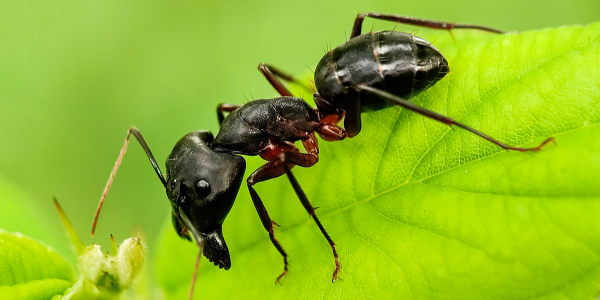
From Sawdust Trails to Structural Damage: Understanding Carpenter Ants in New York Homes
As spring blooms in New York, so do the pests, and one particularly damaging intruder is the carpenter ant. While often mistaken for harmless insects, carpenter ants can wreak havoc on homes, causing significant structural damage. Understanding the behavior and habits of these pests is crucial for homeowners looking to protect their property from costly repairs.
The Carpenter Ant Basics
Carpenter ants are large ants known for their ability to excavate wood to build their nests. Unlike termites, carpenter ants do not consume wood but rather tunnel through it to create galleries where they nest and rear their young. These ants prefer damp or decaying wood, but they can also infest sound wood if conditions are favorable. Carpenter ants are typically black, red, or a combination of both colors and can vary in size, with workers ranging from 1/4 to 1/2 inch in length.
Why Carpenter Ants Thrive in New York Homes
New York’s climate and environmental conditions provide an ideal habitat for carpenter ants. The state’s humid summers and cold winters create conditions conducive to moisture buildup in homes, which carpenter ants seek out for nesting sites. New York’s abundance of wooded areas and older homes with wooden structures also offer ample nesting opportunities!
Signs of a Carpenter Ant Infestation
Identifying a carpenter ant infestation early is crucial for preventing extensive damage to your home. Here are some common signs to watch out for:
- Sawdust Trails: Carpenter ants excavate wood by chewing tunnels through it, leaving behind piles of sawdust, known as frass. If you notice small piles of sawdust accumulating near wooden structures or along baseboards, it may indicate a carpenter ant infestation.
- Hollow-Sounding Wood: As carpenter ants tunnel through wood, they weaken its structural integrity, causing it to become hollow. Tap on wooden surfaces, such as walls, beams, or window frames—if they sound hollow, it could be a sign of carpenter ant activity.
- Winged Swarmers: Like termites, carpenter ants produce winged reproductive individuals known as swarmers. These winged ants emerge from mature colonies in the spring or early summer to mate and establish new colonies. If you spot winged ants indoors or around your property, it could indicate an established carpenter ant colony nearby.
- Audible Rustling Noises: In some cases, homeowners may hear rustling or crackling noises coming from within walls or wooden structures as carpenter ants tunnel through the wood. While less common, these sounds can be indicative of a significant infestation.
Carpenter ants can cause extensive damage to homes over time, particularly if left unchecked. As they tunnel through wood to create galleries for nesting, they weaken the structural integrity of wooden beams, walls, and other components of a home. This damage can compromise the stability of the structure, leading to costly repairs and renovations.
Preventing Carpenter Ant Infestations
Prevention is key when it comes to dealing with carpenter ants. Here are some tips to help protect your home from infestations:
- Address Moisture Issues: Carpenter ants are attracted to moisture, so it’s essential to address any leaks or water buildup in and around your home. Repair leaky pipes, improve ventilation in damp areas, and ensure proper drainage away from your home’s foundation.
- Seal Entry Points: Inspect the exterior of your home for cracks, gaps, or openings that could serve as entry points for carpenter ants. Seal any openings with caulk or weatherstripping to prevent ants from gaining access to your home.
- Trim Vegetation: Keep tree branches and shrubs trimmed away from your home to eliminate potential pathways for carpenter ants. Additionally, consider creating a barrier of gravel or mulch between your home’s foundation and landscaping to deter ants from nesting near your house.
- Remove Attractants: Keep firewood, lumber, and other wooden materials stored away from your home’s exterior. Remove dead trees, stumps, and decaying wood from your property, as these can attract carpenter ants looking for nesting sites.
Protect Your Home from Carpenter Ants with Knockout Pest Control
Carpenter ants may be small, but the damage they can inflict on your home is significant. Don’t let carpenter ants take over your home. Contact Knockout Pest Control today to schedule your professional inspection and knock out those carpenter ants for good!


